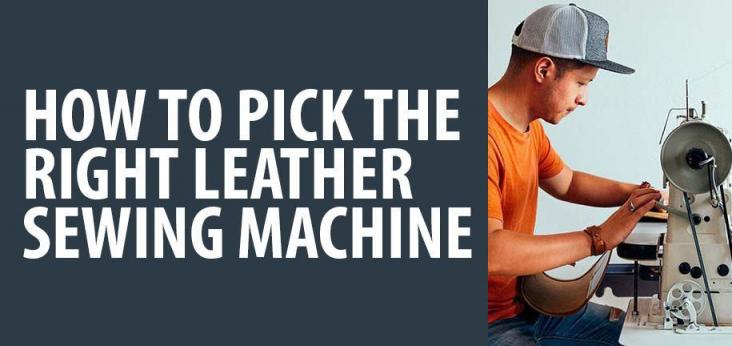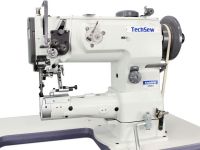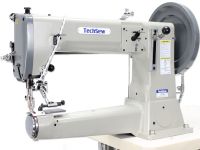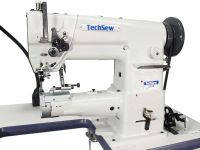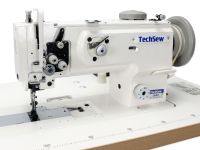There are many different types of sewing machines designed for many different applications. When shopping for a leather sewing machine, you should first and foremost consider the type of products you will be sewing to ultimately choose the right machine for your needs.
For example, the type of machine designed for sewing heavy leather tool belts might not be the right machine for sewing wallets. Each machine has its limitations and while there are no machines that will sew absolutely everything, choosing a machine that will sew the majority of your products is a great investment that will benefit you for many years to come.
TYPES OF LEATHER SEWING MACHINES
Industrial sewing machines come in all shapes and sizes. Some popular types of sewing machines include:
- Cylinder arm machines
- Flatbed machines
- Post bed machines
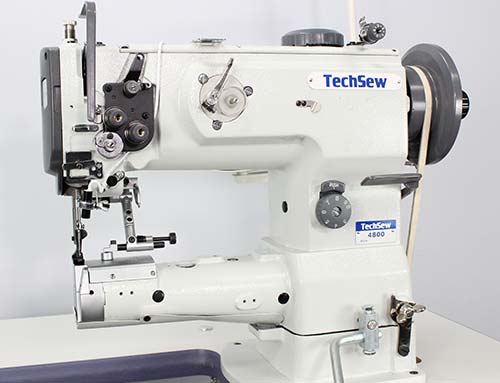
Cylinder arm machines are great for sewing into hard-to-reach areas, corners, gussets or sewing cylindrical products such as leather bags. The open sewing area around the cylinder arm makes it easy to turn and maneuver without having to fold or roll the product.
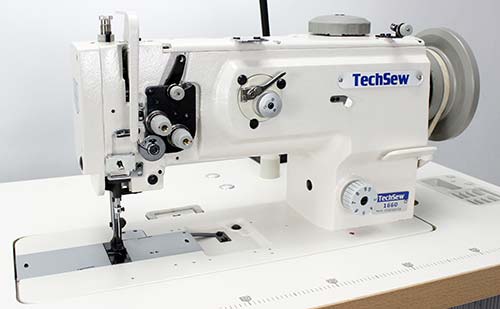
Flatbed machines are commonly used for sewing flat products such as belts, wallets, leather garments, straps, collars and more. The advantage of a flatbed machine is that the product is laid flat and supported by the flat surface of the machine and table surface.
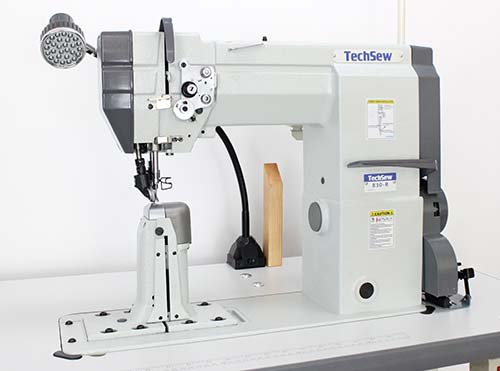
Post bed machines are also great for sewing into hard-to-reach areas and are commonly used in footwear and apparel production. A post bed makes it easy to turn and maneuver the product while sewing and typically features a “roller foot” for sewing close to the edge of the material and for sewing intricate shapes and curves.
TYPES OF FEED MECHANISM
Every sewing machine has a “feed mechanism”, which pulls and “feeds” the material into the machine while sewing. Some popular feed mechanisms include:
- Compound Feed / Compound Walking Foot
- Drop Feed / Regular Feed
- Needle Feed
For sewing most leather products, a compound walking foot or compound feed mechanism is recommended. With a compound feed, the presser feet alternate to “walk” the material into the machine, and the needle moves back and forth in tandem with the inside presser foot to help feed the material. Compound walking foot machines keep consistent downwards pressure on the material, preventing multi-layered products from shifting while sewing. For the purposes of this article we will stick to compound walking foot machines as these are the most popular kind of machine for sewing leather products.
Compound walking foot feed mechanism
OTHER IMPORTANT CONSIDERATIONS
Beyond the type of machine and feeding mechanism, there are other features to consider when shopping for a leather sewing machine:
Maximum sewing thickness
Some machines are designed for sewing light and medium leather up to 1/4", 3/8" or 1/2” thick, while others are designed for sewing thick and heavy saddle and harness leather up to 1” thick. Choose a machine designed to sew the thickness of the leather you will be working with.
Thread sizes
Some machines are limited to thinner thread, while others can use much larger thread sizes. Most light and medium leather sewing machines can use thread sizes 33 to 138. Some machines can use up to size 207 or 277. Many heavy-duty machines can use up to size 415. Most leather products such as wallets and bags use thread size #69 or #92, but you may wish to use a larger thread size. For more information on thread types and thread sizes, visit our nylon thread buying guide.
Needle sizes
Some machines are limited to thinner needles, while others can use much larger needle sizes. In general, the thicker the material being sewn, the larger the needle size should be. Most light and medium leather sewing machines can use thread sizes 18 to 24, while heavy-duty machines can use up to size 27. You should always select the appropriate needle size to match the material and the thread size being used on your machine.
Motor
A variable speed Servo motor is always recommended when sewing leather products, as it allows you to control the sewing speed and sew one stitch at a time. A speed reducer pulley is often added in combination with the Servo motor to further reduce the sewing speed (down to less than 1 stitch per second).
Special features, add-ons and attachments
Various extra features and attachments are available on machines such as a swing down edge guide, flatbed attachment, automatic needle position system and more. Read up on these features to decide if they are necessary and available on the machine you are considering.
Warranty and support
Let’s face it – things can go wrong when learning to use a sewing machine. With the right technical support you will be able to minimize down time and get back to sewing.
Techsew is proud to offer a limited lifetime warranty with free technical support. This means if you have any issues with your machine, you can call or email us to consult directly with a technician. From there, they will guide you through any kind of repair or adjustment required to get your machine back up and running. No need to ship the machine anywhere or pay for expensive repair services. This service is free of charge and included with your warranty for the life of the machine.
NARROWING DOWN YOUR CHOICE
The following are recommendations based on the type of product being sewn.
Which machine is best for sewing leather bags, wallets, belts, notebook covers, upholstery, satchels and saddle bags?
Which machine is best for sewing belts, wallets, upholstery and leather garments?
Which machine is best for sewing saddle pads, gun holsters, harnesses, heavy leather satchels/bags and knife sheaths?
Which machine is best for sewing custom shoes and sneakers?

 USA
USA













